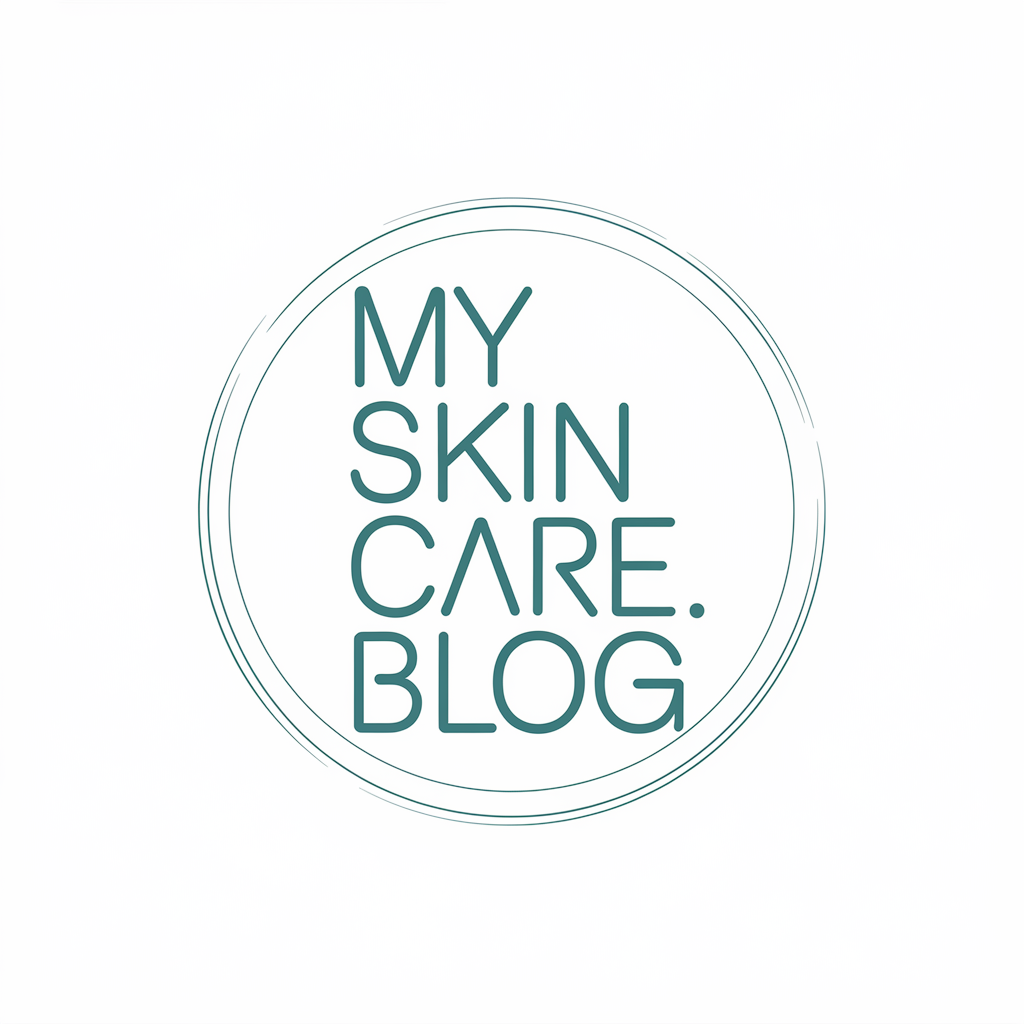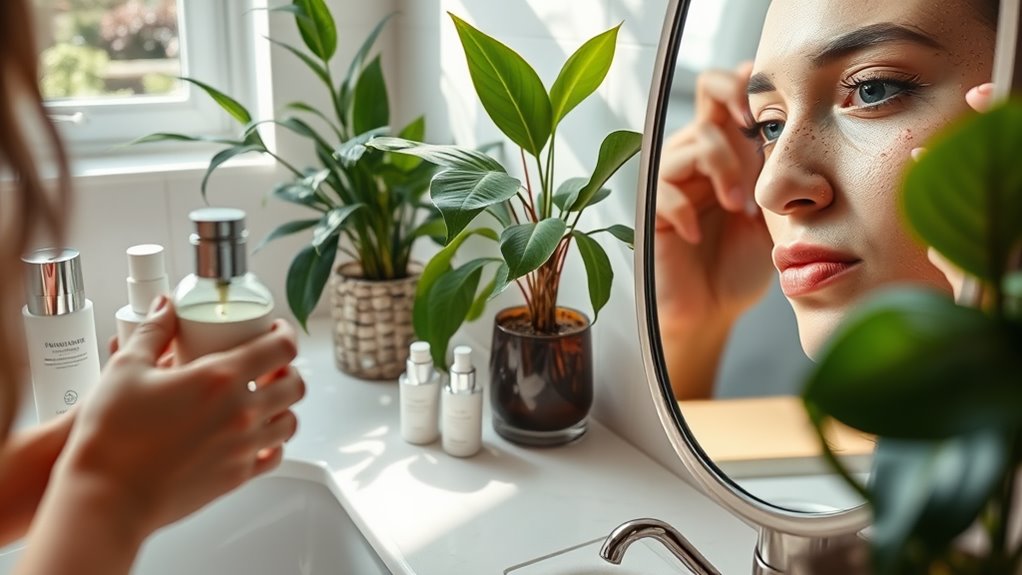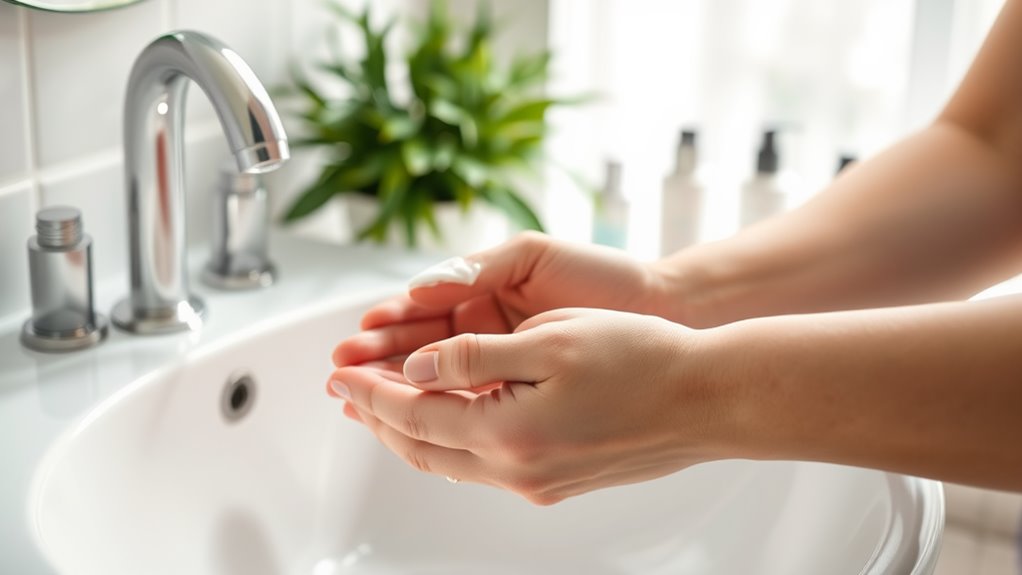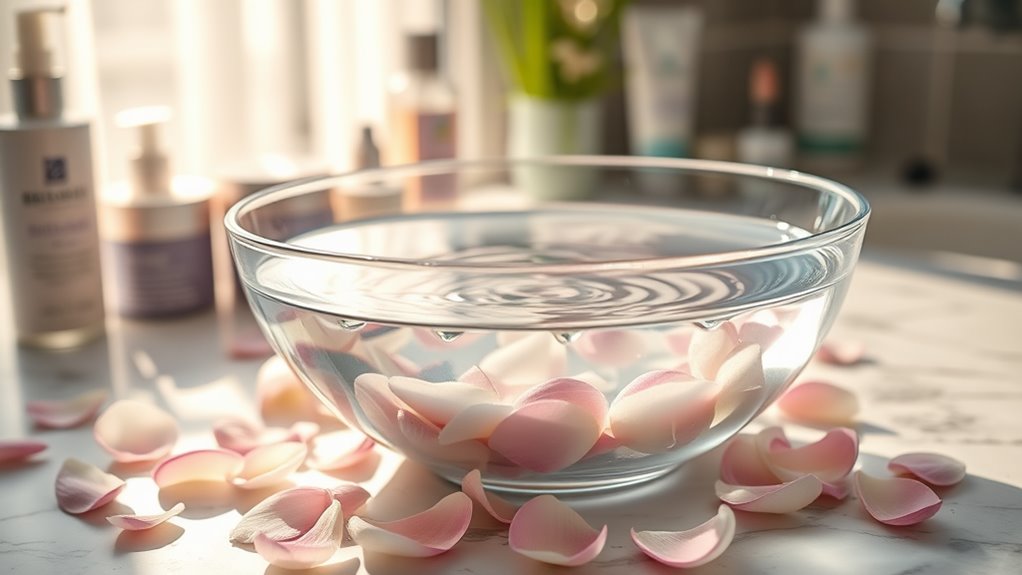10 Sneaky Signs You’re Using the Wrong Skincare Routine (and How to Fix It!)
You might find it surprising that the symptoms you’re experiencing could be linked to your skincare routine. If your skin feels tight or you’re battling persistent breakouts, these could be signs that something’s off. It’s essential to recognize these issues early on, as they can lead to more significant problems. Curious about what other signs to look for and how to address them effectively? Let’s explore the common pitfalls and the solutions that can restore your skin’s health.
Key Takeaways
- Skin feels tight or dry after cleansing, indicating over-cleansing or harsh ingredients; switch to a hydrating cleanser and serum with hyaluronic acid.
- Persistent breakouts suggest unsuitable products; avoid heavy oils and stick to gentle, non-comedogenic ingredients like salicylic acid.
- Uneven skin tone may stem from sun exposure; incorporate vitamin C serums and niacinamide to brighten skin and improve texture.
- Excessive oiliness can result from wrong products; opt for lightweight, oil-free moisturizers and gentle exfoliants to maintain balance.
- Irritation or redness points to harsh ingredients; use fragrance-free, gentle cleansers and patch test new products to minimize allergic reactions.
Your Skin Feels Tight or Dry
If your skin feels tight or dry, it’s a clear sign that your skincare routine may be off balance. You might be over-cleansing or using products with harsh ingredients.
To restore moisture, consider incorporating a hydrating cleanser and a gentle exfoliant.
Look for skincare routine tips that emphasize hydration, such as using a serum with hyaluronic acid and a nourishing moisturizer.
You should also include a sunscreen to protect your skin barrier. Remember, a balanced routine caters to your skin’s needs, ensuring it remains supple and healthy.
Dehydrated skin can lead to key signs of dehydration, such as increased sensitivity and flakiness, so adjust these elements for ideal hydration and comfort.
Persistent Breakouts or Acne
If you’re experiencing persistent breakouts or acne, it’s essential to examine your skincare products closely.
Certain ingredients can clog pores or irritate your skin, while over-exfoliation may strip away essential oils, worsening the issue. Additionally, how you layer your products can impact their effectiveness, so adjusting your routine could lead to clearer skin. Over-exfoliation can damage the skin’s protective barrier, leading to increased sensitivity and breakouts.
Product Ingredients Matter
Have you ever wondered why your skincare routine isn’t delivering the clear, healthy skin you desire?
The ingredients in your products play a vital role.
Many common ingredients can clog pores or irritate the skin, leading to persistent breakouts.
For example, heavy oils and certain alcohols may exacerbate acne.
Conversely, look for non-comedogenic ingredients like salicylic acid or benzoyl peroxide, known for their acne-fighting properties.
Reading labels is key; avoid products with synthetic fragrances or parabens that can trigger breakouts.
Understanding your skin type and matching it with the right ingredients can drastically improve your results.
Over-Exfoliation Issues
Over-exfoliation can wreak havoc on your skin, leading to persistent breakouts and acne that seem impossible to control.
When you exfoliate too frequently, you strip away essential oils and compromise your skin’s barrier, making it more susceptible to irritation and inflammation.
This disruption can trigger an overproduction of oil, resulting in clogged pores and breakouts.
If you notice increased acne despite your efforts, it’s time to reassess your routine.
Limit exfoliation to once or twice a week, and prioritize gentle products with effective ingredients like lactic acid or enzymes to promote cell turnover without causing harm.
Your skin will thank you!
Skincare Layering Technique
Layering your skincare products correctly is essential for addressing persistent breakouts or acne.
Start with a gentle cleanser to remove impurities without stripping your skin.
Follow with a toner containing salicylic acid or witch hazel to help unclog pores.
Next, apply targeted treatments like benzoyl peroxide or retinoids directly on blemishes.
Use a lightweight, non-comedogenic moisturizer to hydrate without causing further breakouts.
Finally, don’t forget sunscreen during the day to protect your skin.
Remember, the order matters: thinnest to thickest products.
This technique maximizes absorption and effectiveness, ultimately leading to clearer skin and fewer breakouts.
Uneven Skin Tone or Texture
If you’re noticing uneven skin tone or texture, it could stem from various factors like sun damage, hormonal changes, or improper product use.
Understanding these causes is essential for effective treatment.
Let’s explore some proven solutions to help you achieve a more balanced complexion. Additionally, incorporating scientifically-backed methods for treating hyperpigmentation can significantly improve your skin’s appearance.
Causes of Uneven Tone
Uneven skin tone can often stem from a variety of factors that disrupt the skin’s natural balance.
Recognizing these causes is essential for addressing the issue effectively.
- Sun exposure: UV rays can trigger hyperpigmentation.
- Hormonal changes: Fluctuations during menstruation or pregnancy can affect melanin production.
- Skin conditions: Acne scars, rosacea, and eczema may lead to uneven texture.
- Lifestyle factors: Poor diet, stress, and lack of sleep can impact skin health.
Addressing these underlying issues is vital to regaining a more uniform complexion and achieving healthier skin overall.
Effective Treatment Options
Finding the right treatment options for uneven skin tone or texture can greatly enhance your skin’s appearance and overall health.
Consider incorporating vitamin C serums, which brighten skin and reduce pigmentation.
Regular exfoliation with chemical exfoliants like AHAs or BHAs can smooth texture and reveal fresh skin.
Niacinamide is another excellent choice, known for its ability to reduce redness and improve skin barrier function.
Additionally, professional treatments like chemical peels or laser therapy can provide more significant results.
Always remember to wear sunscreen daily, as UV exposure can worsen uneven tone.
Consistency in your routine is key for visible improvement.
Excessive Oiliness
Have you ever wondered why your skin feels excessively oily despite following a diligent skincare routine?
This issue could stem from using the wrong products or over-cleansing.
When your skin feels stripped, it compensates by producing more oil.
To combat excessive oiliness, consider these strategies:
- Choose non-comedogenic products that won’t clog pores
- Use a lightweight, oil-free moisturizer
- Incorporate a gentle exfoliant to remove dead skin cells
- Avoid harsh cleansers that disrupt your skin barrier
Additionally, incorporating a skincare routine tailored for oily skin can help regulate sebum production effectively.
Irritation or Redness
If you’re experiencing irritation or redness, it’s essential to identify the common causes, such as harsh ingredients or over-exfoliation. These issues can lead to discomfort and even exacerbate existing skin conditions. Fortunately, there are effective solutions available to soothe your skin and restore its balance. For instance, using gentle methods can provide immediate relief and help calm irritated skin within minutes.
Common Causes of Irritation
What could be causing that persistent irritation or redness on your skin?
Several factors might be at play, and identifying them is key to achieving a healthy complexion.
Here are some common culprits:
- Harsh ingredients: Products with alcohol, fragrances, or sulfates can strip moisture and irritate your skin.
- Over-exfoliation: Too much scrubbing or using strong acids can compromise your skin’s barrier.
- Allergic reactions: New products may trigger sensitivities, leading to redness and discomfort.
- Environmental stressors: Pollution, sun exposure, and extreme temperatures can exacerbate skin irritation.
Understanding these causes helps you make informed changes for better skin health.
Solutions for Redness Relief
Finding effective solutions for redness relief is essential for restoring your skin’s comfort and appearance.
Start by incorporating gentle, fragrance-free cleansers and moisturizers designed for sensitive skin.
Look for ingredients like aloe vera, chamomile, and niacinamide, which soothe inflammation and promote healing.
Avoid active ingredients like retinoids or strong exfoliants that can exacerbate irritation.
Always apply a broad-spectrum sunscreen to protect your skin from UV damage.
If redness persists, consider consulting a dermatologist for tailored advice or prescription treatments.
Dullness and Lack of Radiance
Ever wonder why your skin looks lackluster and devoid of that healthy glow?
You might be using the wrong products or skipping essential steps in your routine.
To restore radiance, consider these factors:
- Inadequate exfoliation: Dead skin cells can accumulate, dulling your complexion.
- Lack of hydration: Dehydrated skin often appears lifeless and flat.
- Poor diet: Nutritional deficiencies can impact skin health and vibrancy.
- Inconsistent sun protection: UV damage can lead to uneven texture and tone.
Incorporating regular exfoliation techniques can help remove dead skin cells and promote a brighter, more youthful appearance.
Reassess your skincare routine and incorporate products that target dullness for a revitalized, glowing appearance.
Your skin deserves it!
Unresponsive to Products
Have you ever noticed that despite diligently applying your skincare products, your skin seems unresponsive and fails to improve?
This lack of response may indicate that your products aren’t suitable for your skin type or concerns.
For instance, using heavy creams on oily skin can lead to clogged pores, while too many active ingredients can irritate your skin.
Additionally, make sure you’re allowing enough time for products to work—typically, four to six weeks. Proper cleansing is crucial in ensuring your skin is ready to absorb the beneficial ingredients of your skincare products.
If the issue persists, consider simplifying your routine, performing a patch test for new products, or consulting a dermatologist for personalized recommendations tailored to your specific needs.
Frequent Allergic Reactions
If your skin reacts negatively to products, such as redness, itching, or breakouts, you might be dealing with frequent allergic reactions.
Identifying the culprits in your skincare routine is essential for your skin’s health.
Consider these points:
- Check ingredient labels for common allergens.
- Patch test new products to gauge reactions.
- Limit fragrance and harsh chemicals in your routine.
- Consult a dermatologist for persistent issues.
Switching to hypoallergenic or sensitive skin formulas can help minimize reactions.
Signs of Aging Appear Early
As you notice fine lines, wrinkles, or uneven skin tone appearing earlier than expected, it may indicate that your skincare routine isn’t effectively addressing your skin’s needs.
Factors such as inadequate hydration, lack of sun protection, or insufficient exfoliation can accelerate aging.
Using products with active ingredients like retinoids, antioxidants, and hyaluronic acid can combat these signs.
Additionally, make sure you’re applying sunscreen daily to prevent further damage from UV exposure.
Regularly reassess your routine based on changes in your skin’s condition, and consult a dermatologist if necessary to develop a tailored plan that supports your skin’s longevity and health.
Overwhelmed by Product Choices
Recognizing early signs of aging can prompt you to reevaluate your skincare routine, but the sheer number of products available can leave you feeling overwhelmed.
To simplify your choices, focus on these essential tips:
- Identify your skin type: Know whether you have oily, dry, or combination skin.
- Research ingredients: Look for proven components like retinol, hyaluronic acid, and antioxidants.
- Limit your routine: Stick to a few key products—cleanser, moisturizer, and sunscreen.
- Consult a professional: A dermatologist can help tailor a regimen to your specific needs.





